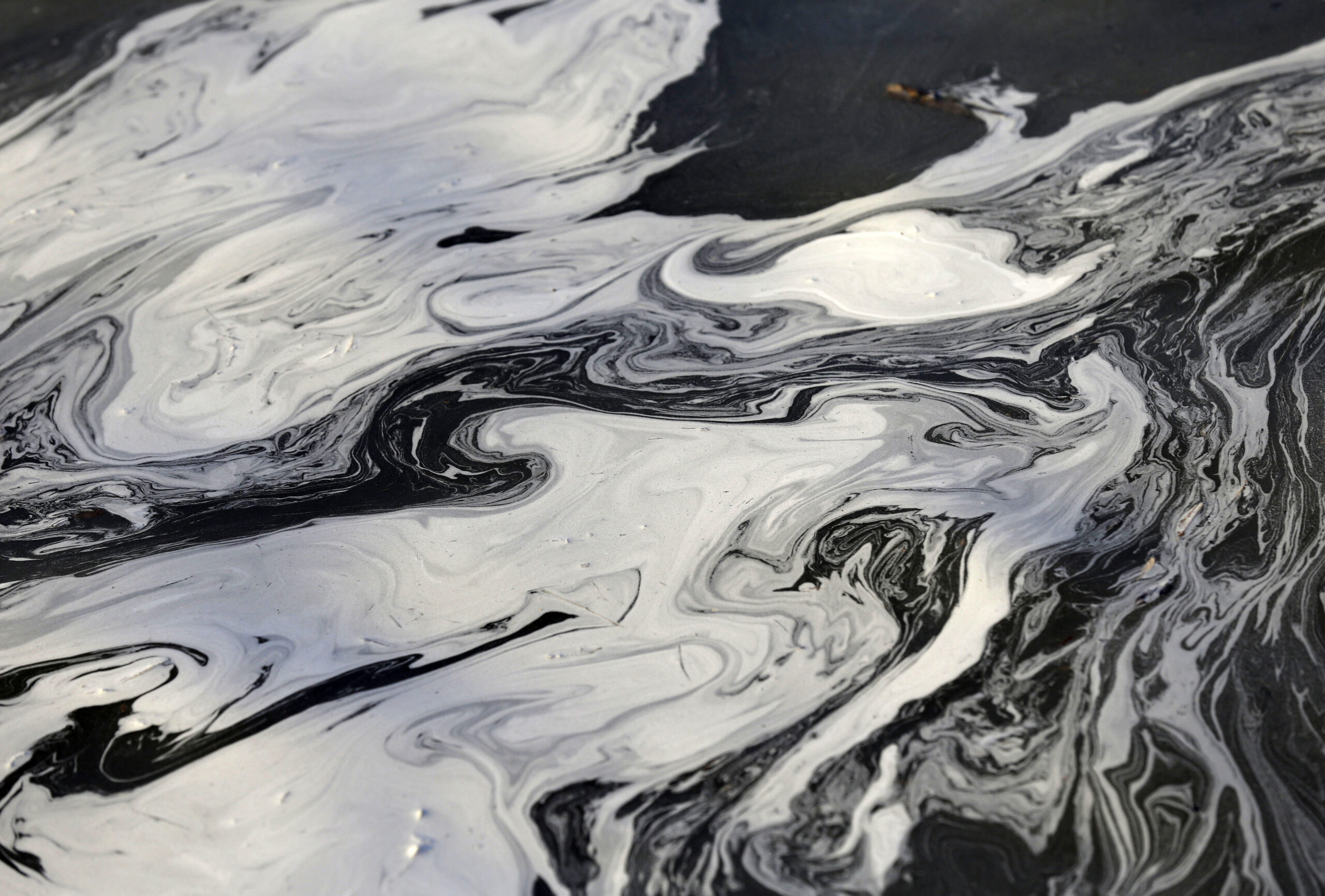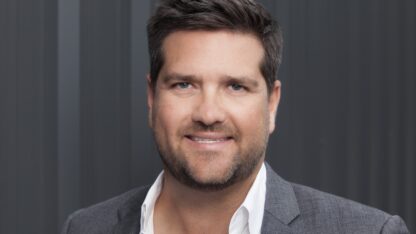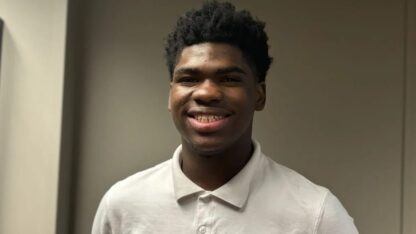Researchers Haven’t Found A Single Endangered Right Whale Calf Yet This Season
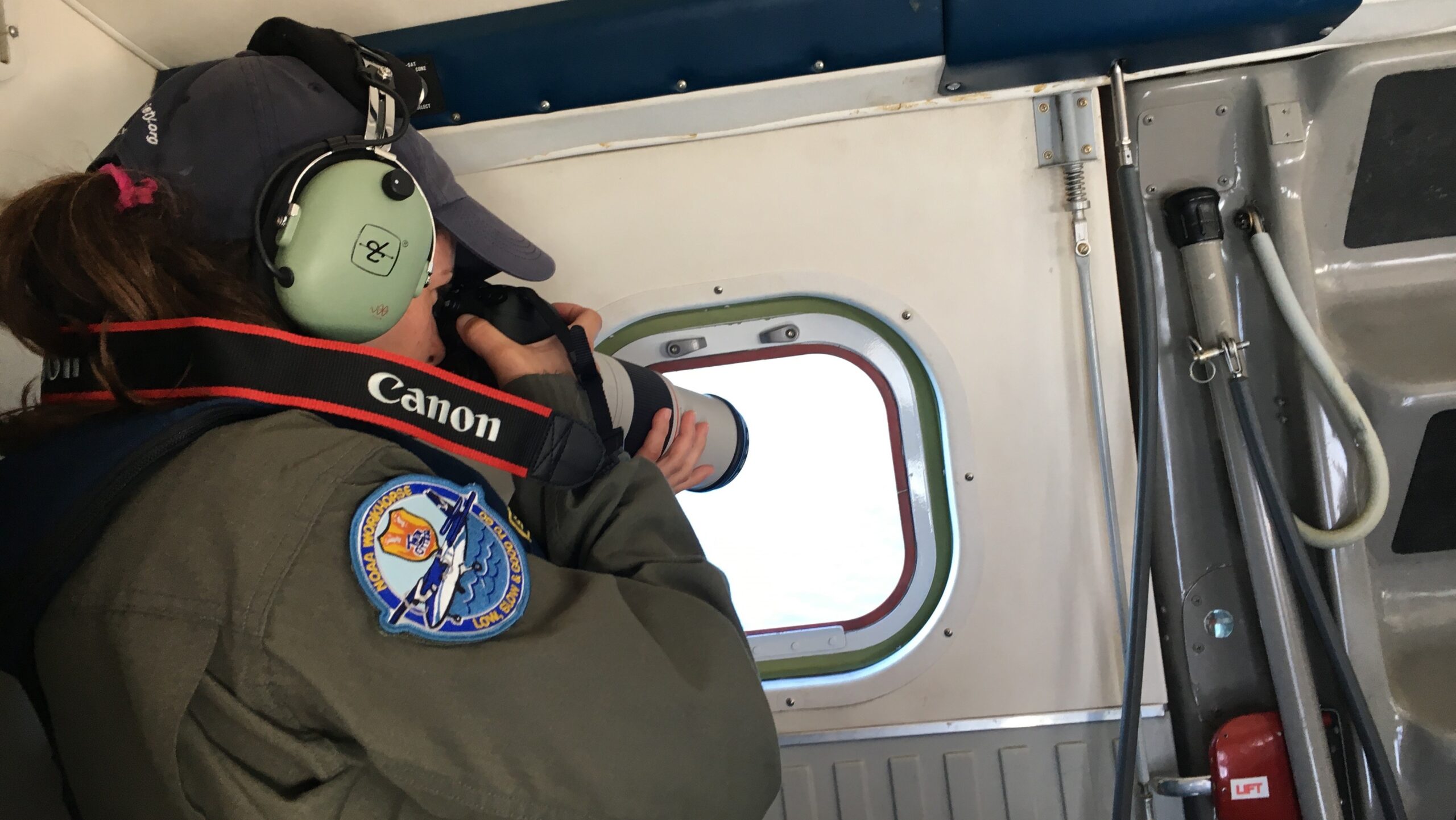
Melanie White takes photos of North Atlantic Right whales from NOAA’s Twin Otter as the plane circles the group of whales near Savannah. Whale observers and researchers use the photos to identify the whales.
Molly Samuel / WABE
On winter days when the weather is good, a research plane takes off from St. Simons, a barrier island in Georgia. Pilots from the National Oceanic and Atmospheric Administration fly straight lines out and back along Georgia’s Atlantic coast, covering hundreds of miles of open ocean. Riding in the plane, surveyors are glued to the window scanning the water for North Atlantic right whales.
There are only about 450 of the big, rotund whales left on earth. The whaling industry once decimated the species. While they’ve been protected for decades now, the endangered whales are still struggling, and this has been a terrible season for them.
The whales spend most of their time around New England and Canada, but starting in November pregnant whales and some others head south to the warmer water off the coast of Georgia and north Florida. This is where they spend the winter and begin to raise their calves.
But this year, no one saw any whales until the end of January. And most of the way through the calving season, there still aren’t any calves.
So the aerial survey team keeps looking.
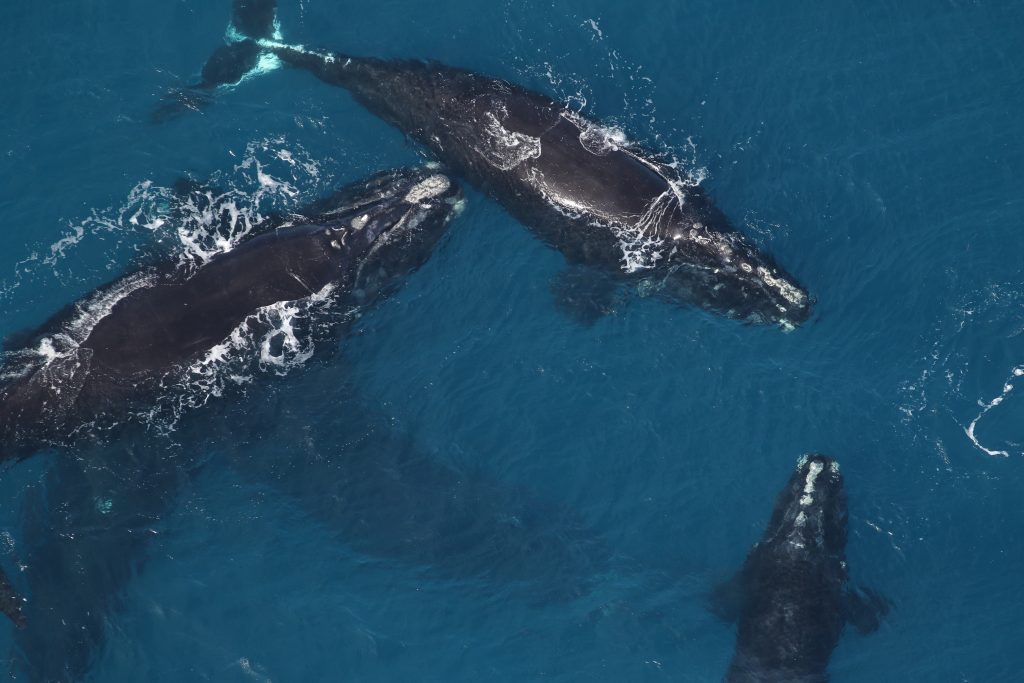
“On really nice days, you’re looking out as far as possible, just for any disturbance at the surface,” says Melanie White as she leans into the window of the plane, watching for whales. White is the Right Whale Conservation Project Manager for Sea to Shore Alliance, the non-profit that employs the surveyors.
She sees dolphins, sea turtles and molas, which are big pancake-shaped animals also known as ocean sunfish. But rarely does the aerial survey team see a right whale. They’ve spotted just a handful this winter.
Last year the numbers were low, too. But no calves at all is a new low for recent years.
“This is the first time since I have worked with right whales that that has ever happened,” said Barb Zoodsma, who has worked on right whales with NOAA since the early-1990s.
She says of the 450 or so right whales alive, fewer than a hundred are breeding females.
“Ninety-four,” she says. “That’s not good. You don’t have to be Einstein to figure out that’s a bad situation.”
Zoodsma says the females are dying young and they’re having calves less often.
Climate change may be having an impact on their food.
North Atlantic right whales eat tiny crustaceans called copepods. A single copepod is about the size of a grain of rice, and Mark Baumgartner, a marine ecologist at the Woods Hole Oceanographic Institution, says a whale will eat one to two billion of them a day.
The places where the right whales find copepods, off the coast of New England, are warming up, says Baumgartner.
“This may have something to do with climate change – it’s very likely that it does,” he says. “It makes sense that the right whale’s food, the copepods, would be affected as well.”
He says if the female whales are working harder to find enough food and they’re not saving up enough fat, it’s harder for them to carry their pregnancies to term, or to nurse their newborns.
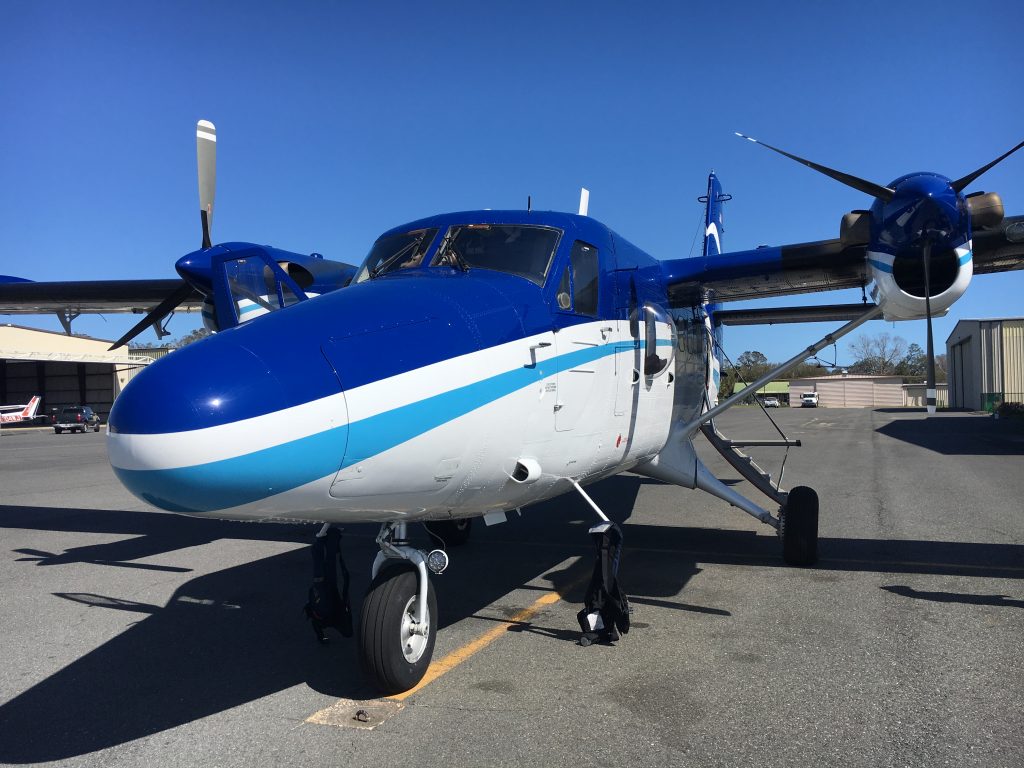
That’s not Baumgartner’s biggest concern, though, because there’s something more acute happening: right whales are getting tangled in fishing gear and hit by ships. Seventeen right whales died last year. Several of those were killed by ships or fishing equipment. Another North Atlantic right whale was found dead earlier this year, tangled in fishing gear off the coast of Virginia.
The NOAA plane keeps sweeping up and back, from Georgia’s barrier islands out to sea. The aerial survey team sees hundreds of cownose rays migrating north, but still no whales.
The plane is a Twin Otter, which is popular for scientific research since it can carry a heavy load but still fly relatively slowly and low to the ground. The NOAA pilots and the whale observers wear flight suits with Twin Otter patches on them that say “NOAA workhorse. Low, slow & good to go.”
Commander Jason Mansour calls what they do “natural security.” When the pilots aren’t helping people look for whales, they’re flying for other research reasons: studying snowpack, mapping coastlines, measuring air pollution.
But for the next few weeks they’re based in St. Simons, looking for the right whales that seem largely not to have come. The whales’ numbers have been trending down since 2011.
Right whales often seem to get caught in ropes when they’re feeding with their mouths open, says Amy Knowlton, a research scientist at the New England Aquarium. She says when whale hit a rope, they basically “freaks out,” and start thrashing around.
“It just gets all wrapped up around their body, around their flipper, around their tail,” Knowlton says.
Knowlton says rope used in fishing has gotten stronger so the whales can’t break free. Plus there’s just more fishing gear out there in the ocean.
Some whales might just drown. Others can stay tangled for months.
“Sometimes they tow that gear for a while,” she says. “We had one whale named Ruffian who carried a snowcrab pot from the Gulf of St. Lawrence all the way to the coast of Florida.”

Those whales, with the long-term entanglements get weak and have open wounds.
“The rope can cut through their bodies and keep them from being able to feed. It creates drag, and they basically just waste away,” says Clay George, a wildlife biologist with the Georgia Department of Natural Resources.
George cuts the fishing gear off the whales when he can. He says more than 80 percent of the whales have scars from getting entangled at one point or another.
“The right whales are at a point where more are dying than are being born,” George says. “That’s just not sustainable long-term.”
After hours searching from the air, Carolyn O’Connor from Sea to Shore Alliance finally spots something. “Bingo,” she says.
The plane veers into a tight circle.
“I feel like there’s a lot of whales here,” White says.
There are five adults. One of them breaches. It slaps its tail. The whales are socializing. But still no calves.
O’Connor says it’s exciting every time they see a whale, but “it’s extremely disheartening and kind of scary to not have a calf yet this late in the season. It’s not a good thing.”
They’ll keep looking for them, though, for another couple weeks.

